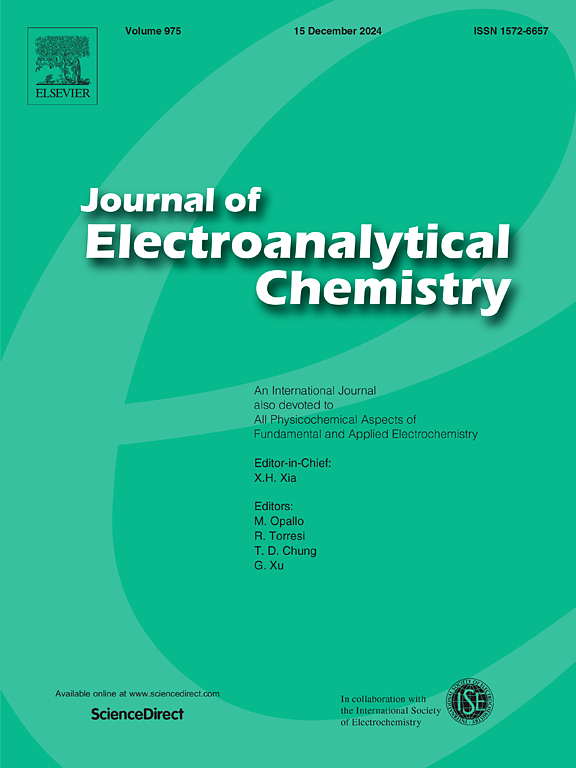High-valent metal molybdenum-doped NiFe LDH nanosheet for efficient oxygen evolution reaction
IF 4.1
3区 化学
Q1 CHEMISTRY, ANALYTICAL
引用次数: 0
Abstract
Due to its unique layered structure and excellent stability, NiFe layered double hydroxide (NiFe LDH) is considered to be a promising catalyst for oxygen evolution reaction (OER). However, its OER performance is still limited by slow kinetics and poor conductivity. Reasonable design of multiple types of active sites has been proved to be an effective means to optimize the OER performance of NiFe LDH. In this study, a defective high-valence metal molybdenum (Mo) doped NiFe LDH electrocatalyst was designed to adjust the electronic structure and generate multiple types of active sites. NiFe LDH was used as the precursor of OER catalyst, and the high-valent metal Mo was introduced by electrodeposition. The electrodeposition process was optimized by adjusting the amount of Mo introduced and the electrodeposition time. A dandelion-like nickel–iron-molybdenum layered double hydroxide nanosheet/nickel foam (NiFeMo LDH/NF) electrocatalyst was designed using nickel foam (NF) as a self-supporting electrode. When the deposition time is 2400 s, the prepared NiFeMo LDH/NF-2400 s has a large electrochemical active area and a dense pore structure, with overpotentials of 220 and 280 mV at 10 and 50 mA cm−2, respectively, showing excellent OER activity. Its stability is good, and it remains stable under 1.0 M KOH for 100 h of continuous operation. The results indicate that Mo doping can not only regulate the electronic structure of transition metals, and promote the generation of active sites, but also contributes to the transfer of electrons between the interfaces, thereby improving OER performance.

求助全文
约1分钟内获得全文
求助全文
来源期刊
CiteScore
7.80
自引率
6.70%
发文量
912
审稿时长
2.4 months
期刊介绍:
The Journal of Electroanalytical Chemistry is the foremost international journal devoted to the interdisciplinary subject of electrochemistry in all its aspects, theoretical as well as applied.
Electrochemistry is a wide ranging area that is in a state of continuous evolution. Rather than compiling a long list of topics covered by the Journal, the editors would like to draw particular attention to the key issues of novelty, topicality and quality. Papers should present new and interesting electrochemical science in a way that is accessible to the reader. The presentation and discussion should be at a level that is consistent with the international status of the Journal. Reports describing the application of well-established techniques to problems that are essentially technical will not be accepted. Similarly, papers that report observations but fail to provide adequate interpretation will be rejected by the Editors. Papers dealing with technical electrochemistry should be submitted to other specialist journals unless the authors can show that their work provides substantially new insights into electrochemical processes.

 求助内容:
求助内容: 应助结果提醒方式:
应助结果提醒方式:


